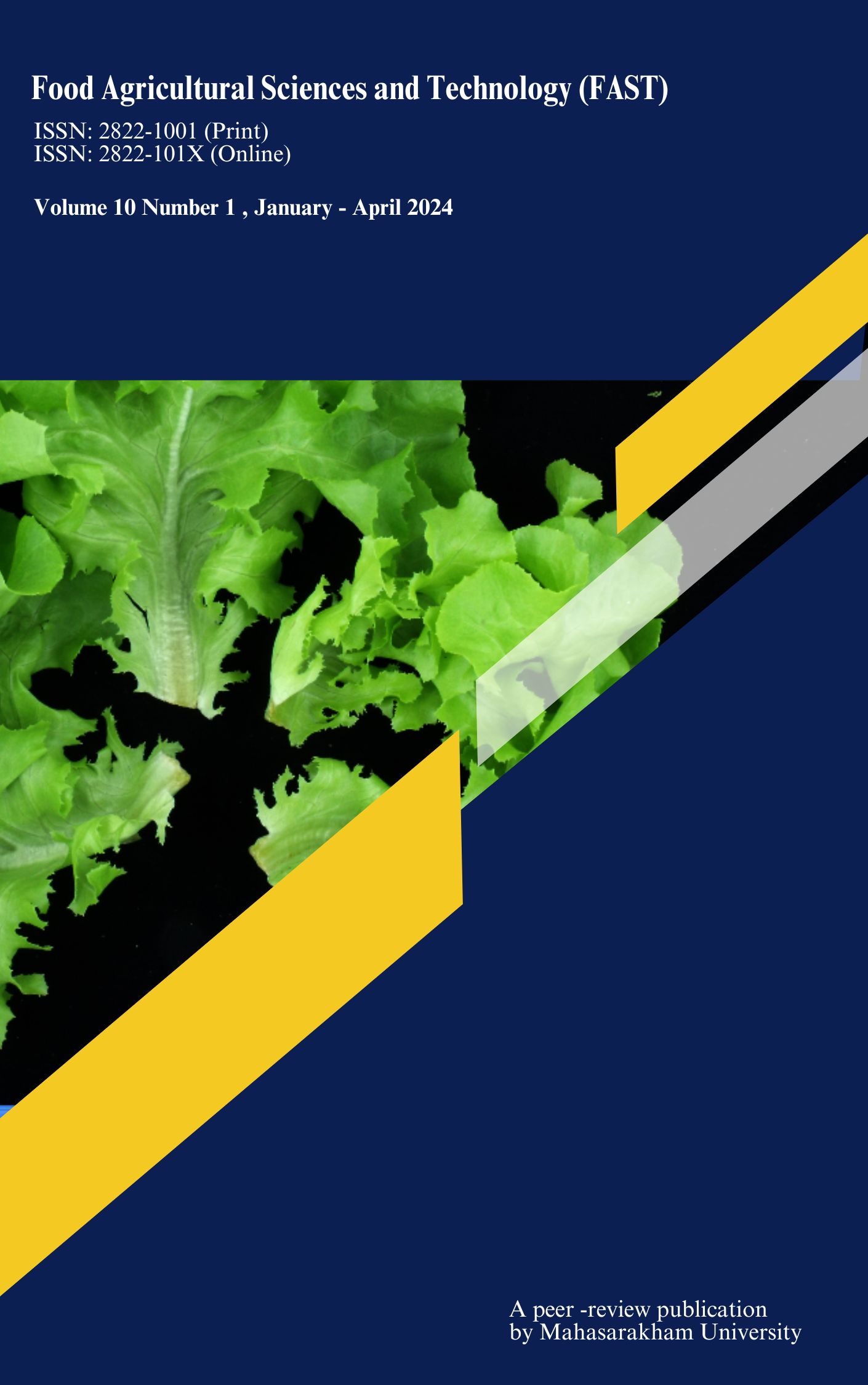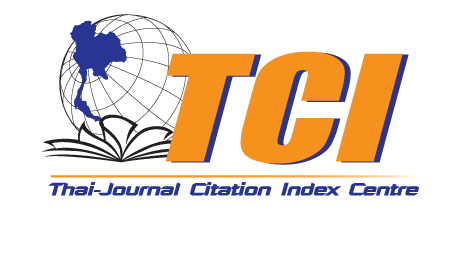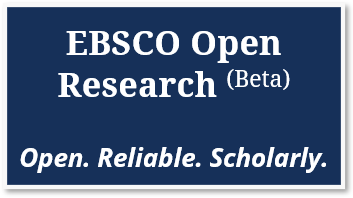Nutritional composition and mineral contents of common edible wild mushrooms from Mamit and Champhai Districts of Mizoram, India
Keywords:
Edible mushrooms, foods, health benefits, Indo-Burma biodiversity hotspot, proteins, nutritional profileAbstract
The present study was conducted to assess the nutritional and mineral composition of wild edible mushrooms from Mizoram, India. Mushrooms are primarily gathered as a significant food source in Mizoram, with certain species holding special value in Mizo traditional cuisine. However, their nutritional properties have not been thoroughly investigated and documented. Therefore, ten wild edible mushrooms collected from Mamit and Champhai Districts of Mizoram were analysed for their nutritional composition and mineral contents. The study revealed that mushrooms exhibit high levels of protein (16.04-32.08%) and carbohydrates (35.92-56.63%), while maintaining relatively low fat content (2.11 – 3.87%). The minimum and maximum mineral contents of mushrooms were determined as mg/g for K (11.6 – 22.4), mg/100g for Na (14.7 – 38.6), Fe (3.5 – 26.8), Zn (4.7 – 31.5), and Ca (1.5 – 14.1). Based on their nutritional composition, the selected wild edible mushrooms were found to be an excellent source of food, offering a balanced and high nutritional value. They possess the potential to significantly contribute to the nutritional needs of people, particularly in rural areas.
References
Agrahar-Murugkar, D., & Subbulakshmi, G. (2005). Nutritional value of edible wild mushrooms collected from the Khasi hills of Meghalaya. Food Chemistry, 89(4), 599–603. https://doi.org/10.1016/ j.foodchem.2004.03.042
Ao, T., & Deb, C. R. (2019). Nutritional and antioxidant potential of some wild edible mushrooms of Nagaland, India. Journal of Food Science and Technology, 56(2), 1084–1089. https://doi.org/10.1007/s13197-018- 03557-w
Arora, D. (1986). Mushrooms demystified: A comprehensive guide to the fleshy fungi. Ten Speed Press.
AOAC. (2000). Official methods of analysis. The Association of Official Analytical Chemists.
Bernas, E., Jaworska, G., & Lisiewska, Z. (2006). Edible mushrooms as a source of valuable nutritive constituents. Acta Scientiarum Polonorum Technologia Alimentaria, 5, 5-20.
Bisht, N. S. (2011). Wood decaying fungi of Mizoram. Government of India: Department of Environment and Forest.
Chawngthu, Z., Tluanga, L., Zothanzama, J., Thachunglura, V. L., Lalbiakmawia, B., & Renthlei, L. (2023). Wood rotting polyporales from the biodiversity reserves within the Indian subtropical habitat. Indian Journal of Microbiology Research, 10(3), 140–148. https://doi.org/ 10.18231/j.ijmr.2023. 025
Chittaragi, A., & Naika, R. (2014). Nutritive value of few wild mushrooms from the western ghats of Shivamogga district, Karnataka, India. Asian J Pharm Clin Res, 7, 50-53.
Chye, F. Y., Wong, J. Y., & Lee, J. S. (2008). Nutritional quality and antioxidant activity of selected edible wild mushrooms. Food Science and Technology International, 14(4), 375–384. https://doi.org/10.1177/10820132080 97445
Crisan, E. V., & Sands, A. (1978). The biology and cultivation of edible mushrooms. Academic Press. https://doi.org/10.1016/b978-0-12- 168050-3.50012-8
Dospatliev, L., Petkova, Z., Antova, G., Angelova-Romova, M., Ivanova, M., & Mustafa, S. (2023). Proximate composition of wild edible mushrooms from the batak mountain, Bulgaria. Journal of Microbiology, Biotechnology and Food Sciences, 12(6), e4718. https://doi.org/10.55251/jmbfs.4718
Elmastas, M., Isildak, O., Turkekul, I., & Temur, N. (2007). Determination of antioxidant activity and antioxidant compounds in wild edible mushrooms. Journal of Food Composition and Analysis, 20(3–4), 337–345. https://doi.org/10.1016 /j.jfca.2006.0 7.003 Falandysz, J., &
Borovička, J. (2013). Macro and trace mineral constituents and radionuclides in mushrooms: health benefits and risks. Applied Microbiology and Biotechnology, 97(2), 477–501. https://doi.org/ 10.1007/s00253-012- 4552-8
Flegg, P. B., & Maw, G. (1977). Mushrooms and their possible contribution to world protein needs. Mushroom J., 48, 395-403.
Gałgowska, M., & Pietrzak-Fiećko, R. (2020). Mineral composition of three popular wild mushrooms from Poland. Molecules, 25(16), 3588. https://doi.org/10.3390/ molecules25163588
Gençcelep, H., Uzun, Y., Tunçtürk, Y., & Demirel, K. (2009). Determination of mineral contents of wild-grown edible mushrooms. Food Chemistry, 113(4), 1033–1036. https://doi.org/10.1016/ j.foodchem.2 008.08.058
Ghosh, S., Dewanjee, D., & Acharya, K. (2022). Exploring therapeutic efficacy of infusion and decoction of two wild edible mushrooms from West Bengal, India. Kavaka, 58(1), 11-14. https://doi.org/10.36460/ kavaka/58/1/2022/11-14
Gunasekara, N.W., Nanayakkara, C.M., Karunarathna, S.C. & Wijesundera, R.L.C. (2021). Nutritional aspects of three Termitomyces and four other wild edible mushroom species from Sri Lanka. Chiang Mai J. Sci., 48, 1236–1246.
Hrudayanath, T., & Sameer, K. S. (2014). Diversity, nutritional composition and medicinal potential of Indian mushrooms: A review. African Journal of Biotechnology, 13(4), 523–545. https://doi.org/10.5897/ ajb2013.13446
Hyde, K. D., Xu, J., Rapior, S., Jeewon, R., Lumyong, S., Niego, A. G. T., Abeywickrama, P. D., Aluthmuhandiram, J. V. S., Brahamanage, R. S., Brooks, S., Chaiyasen, A., Chethana, K. W. T., Chomnunti, P., Chepkirui, C., Chuankid, B., de Silva, N. I., Doilom, M., Faulds, C., Gentekaki, E., & Stadler, M. (2019). The amazing potential of fungi: 50 ways we can exploit fungi industrially. Fungal Diversity, 97(1), 1–136. https://doi.org/ 10.1007/s13225-019- 00430-9
Jacinto-Azevedo, B., Valderrama, N., Henríquez, K., Aranda, M., & Aqueveque, P. (2021). Nutritional value and biological properties of Chilean wild and commercial edible mushrooms. Food Chemistry, 356, 129651. https://doi.org/10.1016/ j.foodchem.2 021.129651
Johnsy, G., Sargunam, S., Murugan, D., & Kaviyarasan, V. (2011). Nutritive value of edible wild mushrooms collected from the Western Ghats of Kanyakumari District. Botany Research International, 4(4), 69-74.
Kalač, P. (2012). A review of chemical composition and nutritional value of wild-growing and cultivated mushrooms. Journal of the Science of Food and Agriculture, 93(2), 209– 218. https://doi.org/10.1002/ jsfa.5960
Kalyoncu, F., Oskay, M., & Kayalar, H. (2010). Antioxidant activity of the mycelium of 21 wild mushroom species. Mycology, 1(3), 195–199. https://doi.org/10.1080/21501203.20 10.511292
Karun, N. C., Sridhar, K. R., & Ambarish, C. N. (2017). Nutritional potential of Auricularia auricula‐judaeand Termitomyces umkowaan– The wild edible mushrooms of South‐Western India. In V.K. Gupta, H. Treichel, V. Shapaval, L. A. de Oliveira, & M. G. Tuohy (Eds). Microbial functional foods and nutraceuticals (pp. 281– 301). Wiley. https://doi.org/10.1002/ 97811190489 61.ch12
Khan, N., Ajmal, M., Nickten, J., Aslam, S., & Ali, M. (2013). Nutritional value of Pleurotus (Flabellatus) Djamor (R-22) cultivated on sawdusts of different woods. Pakistan Journal of Botany, 45, 1105-1108. https://eprints.bbk.ac.uk/id/eprint/95 17
Khumlianlal, J., Sharma, K. C., Singh, L. M., Mukherjee, P. K., & Indira, S. (2022). Nutritional profiling and antioxidant property of three wild edible mushrooms from North East India. Molecules, 27(17), 5423. https://doi.org/10.3390/molecules27 175423
Kumar, S., Mishra, A. K., N, S. K., & Mishra, S. (2022). Economically important wild edible mushrooms of Bonai Forest Division, Odisha, India. Asian Journal of Biology. 16(21), 31–40. https://doi.org/ 10.9734/ ajob/2022/v16i1294
Lallawmsanga, Passari, A. K., Mishra, V. K., Leo, V. V., Singh, B. P., Valliammai Meyyappan, G., Gupta, V. K., Uthandi, S., & Upadhyay, R. C. (2016). Antimicrobial potential, identification and phylogenetic affiliation of wild mushrooms from two sub-tropical semi-evergreen Indian forest ecosystems. PLOS ONE, 11(11), e0166368. https://doi.org/10.1371/journal.pone. 0166368
Li, H., Tian, Y., Menolli, N., Ye, L., Karunarathna, S. C., Perez‐Moreno, J., Rahman, M. M., Rashid, M. H., Phengsintham, P., Rizal, L., Kasuya, T., Lim, Y. W., Dutta, A. K., Khalid, A. N., Huyen, L. T., Balolong, M. P., Baruah, G., Madawala, S., Thongklang, N., &
Mortimer, P. E. (2021). Reviewing the world’s edible mushroom species: A new evidence‐based classification system. Comprehensive Reviews in Food Science and Food Safety, 20(2), 1982–2014. https://doi.org/ 10.1111/1541- 4337.12708
Liu, D., Cheng, H., Bussmann, R. W., Guo, Z., Liu, B., & Long, C. (2018). An ethnobotanical survey of edible fungi in Chuxiong City, Yunnan, China. Journal of Ethnobiology and Ethnomedicine, 14(1).https://doi.org/ 10.1186/s13002-018-0239-2
Liu, Y., Chen, D., You, Y., Zeng, S., Li, Y., Tang, Q., Han, G., Liu, A., Feng, C., Li, C., Su, Y., Su, Z., & Chen, D. (2016). Nutritional composition of boletus mushrooms from Southwest China and their antihyperglycemic and antioxidant activities. Food Chemistry, 211, 83–91. https://doi.org/ 10.1016/j.foodchem.2 016.05.032
Mallikarjuna, S. E., Ranjini, A., Haware, D. J., Vijayalakshmi, M. R., Shashirekha, M. N., & Rajarathnam, S. (2013). Mineral composition of four edible mushrooms. Journal of Chemistry, 2013, 805284. https://doi.org/ 10.1155/2013/805284
Manjunathan, J., & Kaviyarasan, V. (2011). Nutrient composition in wild and cultivated edible mushroom, Lentinus tuberregium (Fr.) Tamil Nadu., India. Indian Food Research Journal, 18, 784-786.
Manzi, P., Gambelli, L., Marconi, S., Vivanti, V., & Pizzoferrato, L. (1999). Nutrients in edible mushrooms: an inter-species comparative study. Food Chemistry, 65(4), 477–482. https://doi.org/ 10.1016/s0308-8146(98)00212-x
Mattila, P., Könkö, K., Eurola, M., Pihlava, J.-M., Astola, J., Vahteristo, L., Hietaniemi, V., Kumpulainen, J., Valtonen, M., & Piironen, V. (2001). Contents of vitamins, mineral elements, and some phenolic compounds in cultivated mushrooms. Journal of Agricultural and Food Chemistry, 49(5), 2343– 2348. https://doi.org/10.1021/ jf001525d
Mleczek, M., Gąsecka, M., Budka, A., Siwulski, M., Mleczek, P., Magdziak, Z., Budzyńska, S., & Niedzielski, P. (2020). Mineral composition of elements in wood- growing mushroom species collected from of two regions of Poland. Environmental Science and Pollution Research, 28(4), 4430– 4442. https://doi.org/10.1007/ s11356-020-10788-y
Mortimer, P. E., Karunarathna, S. C., Li, Q., Gui, H., Yang, X., Yang, X., He, J., Ye, L., Guo, J., Li, H., & Sysouphanthong, P., Zhou, D., Xu, J., & Hyde, K. D. (2012). Prized edible Asian mushrooms: ecology, conservation and sustainability. Fungal Diversity, 56(1), 31– 47. https://doi.org/10.1007/s13225- 012-0196-3
Mortimer, P.E., Xu, J., Karunarathna, S.C., & Hyde, K.D. (2014) Mushrooms for trees and people: a field guide to useful mushrooms of the Mekong region. The World Agroforestry Centre.
Nakalembe, I., Kabasa, J. D., & Olila, D. (2015). Comparative nutrient composition of selected wild edible mushrooms from two agro- ecological zones, Uganda. Springer Plus, 4(1). https://doi.org/ 10.1186/s40064-015- 1188-z
Onwuka G.I. (2005). Food analysis and instrumentation; theory and practice. Naphthalic Prints.
Ouali, Z., Chaar, H., Venturella, G., Cirlincione, F., Gargano, M., & Jaouani, A. (2023). Chemical composition and nutritional value of nine wild edible mushrooms from Northwestern Tunisia. IJM - Itanlian Journal of Mycology, 52, 32-49. https://doi.org/10.6092/issn.2531- 7342/15649.
Ouzouni, P. K., Petridis, D., Koller, W.-D., & Riganakos, K. A. (2009). Nutritional value and metal content of wild edible mushrooms collected from West Macedonia and Epirus, Greece. Food Chemistry, 115(4), 1575–1580. https://doi.org/10.1016/ j.foodchem.2 009.02.014
Ouzouni, P., & Riganakos, K. (2007). Nutritional value and metal content profile of Greek wild edible fungi. Acta Alimentaria, 36(1), 99–110. https://doi.org/10.1556/aalim.36.200 7.1.11
Phillips, R., Foy, N., Kibby, G., & Homola, R. L. (2010). Mushrooms and other fungi of North America. Richmond Hill Firefly Books.
Raghuramulu, N., Madhavan, N. K. & Kalyanasundaram, S. (2003). A manual of laboratory techniques. national institute of nutrition. Indian Council of Medical Research.
Rai, P. K., & Lalramnghinglova, H. (2010). Threatened and less known ethnomedicinal plants of an Indo- Burma hotspot region: conservation implications. Environmental Monitoring and Assessment, 178(1– 4), 53–62. https://doi.org/10.1007/s10661-010- 1670-6
Rai, P. K., & Lalramnghinglova, H. (2011). Ethnomedicinal plants of India with special reference to an Indo-Burma hotspot region: An overview. Ethnobotany Research and Applications, 9, 379. https://doi.org/10.17348/era.9.0.379- 420
Rai, P. K., & Panda, L L.S. (2013). Dust capturing potential and air pollution tolerance index (APTI) of some road side tree vegetation in Aizawl, Mizoram, India: an Indo-Burma hot spot region. Air Quality, Atmosphere & Health, 7(1), 93–101. https://doi.org/10.1007/s11869-013- 0217-8
Sifat, N., Lovely, F., Zihad, S. M. N. K., Hossain, Md. G., Shilpi, J. A., Grice, I. D., Mubarak, M. S., & Uddin, S. J. (2020). Investigation of the nutritional value and antioxidant activities of common Bangladeshi edible mushrooms. Clinical Phytoscience, 6(1). https://doi.org/ 10.1186/s40816-020- 00235-3
Thachunglura, V. L., Rai, P. K., Zohmangaiha, Z., Lalbiakmawia, B., Lalmuansangi, L., & Zothanzama, J. (2023a). Pleurotus giganteus as a Valuable Source of Nutrients. Indian Journal of Science and Technology, 16(sp1), 89–94. https://doi.org/10.17485/ijst/v16sp1. msc12
Thachunglura, V.L., Chawngthu, Z., Zothanzama, J., Lallawmkima., Lalbiakmawia, B., Khumlianlal, J. & Rai, P.K. (2023b). Russulaceae of Ailawng forest with an emphasis on Russula purpureoverrucosa (Russulaceae): A first report for India. Science Vision, 23(3), 41-47. https://doi.org/10.33493/scivis.23.03 .01
Valverde, M. E., Hernández-Pérez, T., & Paredes-López, O. (2015). Edible mushrooms: Improving human health and promoting quality life. International Journal of Microbiology, 2015, 376387. https://doi.org/10.1155/2015/376387
Zakhary, J. W., Abo-Bakr, T. M., El- Mahdy, A. R., & El-Tabey, S. A. M. (1983). Chemical composition of wild mushrooms collected from Alexandria, Egypt. Food Chemistry, 11(1), 31–41. https://doi.org/10.1016/0308- 8146(83)90114-0 Zhou, J., Chen, M., Wu, S.,
Liao, X., Wang, J., Wu, Q., Zhuang, M., & Ding, Y. (2020). A review on mushroom- derived bioactive peptides: Preparation and biological activities. Food Research International, 134, 109230. https://doi.org/10.1016/ j.foodres.2020.109230 Zohmangaiha,
Vabeikhokhei, J.M.C., Zothanzama, J., & Lalrinawmi, H. (2019). Ganoderma Species of Mizoram, India. International Journal of Current Microbiology and Applied Sciences, 8(04), 2871– 2879. https://doi.org/10.20546/ijcmas.2019 .804.335
Zothanzama, J. (2011). Wood rotting fungi of Mizoram. In: H. Lalramnghinglova & F. Lalnunmawia (eds). Forest resources of Mizoram: conservation and management (pp. 326-345). Department of Environmental Science, Mizoram University and Regional Centre, National Afforestation and Eco- development Board; North Eastern Hill University.
Zothanzama, J., Blanchette, A. R., & Lalrinawmi, H. (2018). Identification of the edible and poisonous mushrooms of Mizoram. Government of Mizoram.
Downloads
Published
How to Cite
Issue
Section
License
Copyright (c) 2023 Food Agricultural Sciences and Technology

This work is licensed under a Creative Commons Attribution-NoDerivatives 4.0 International License.







